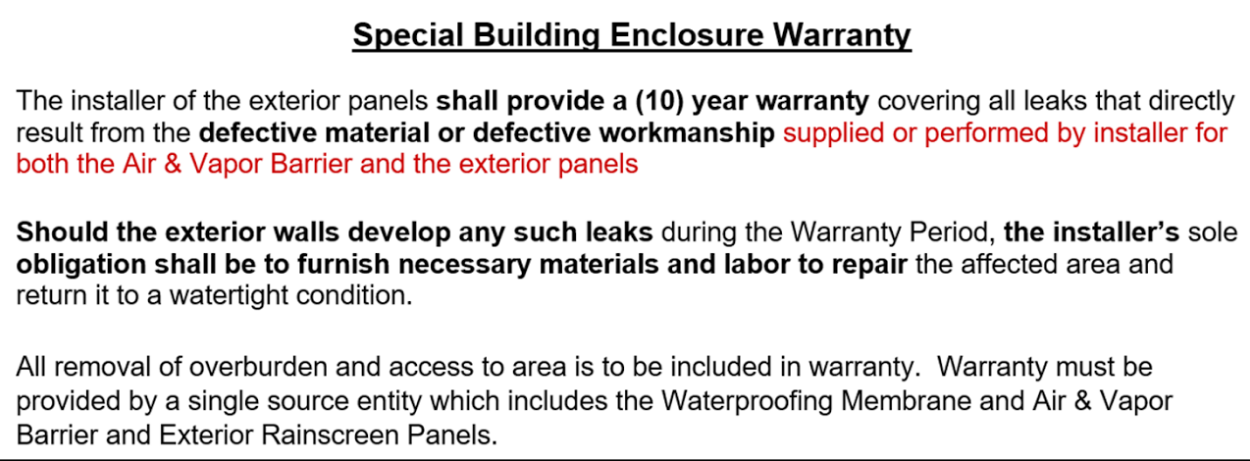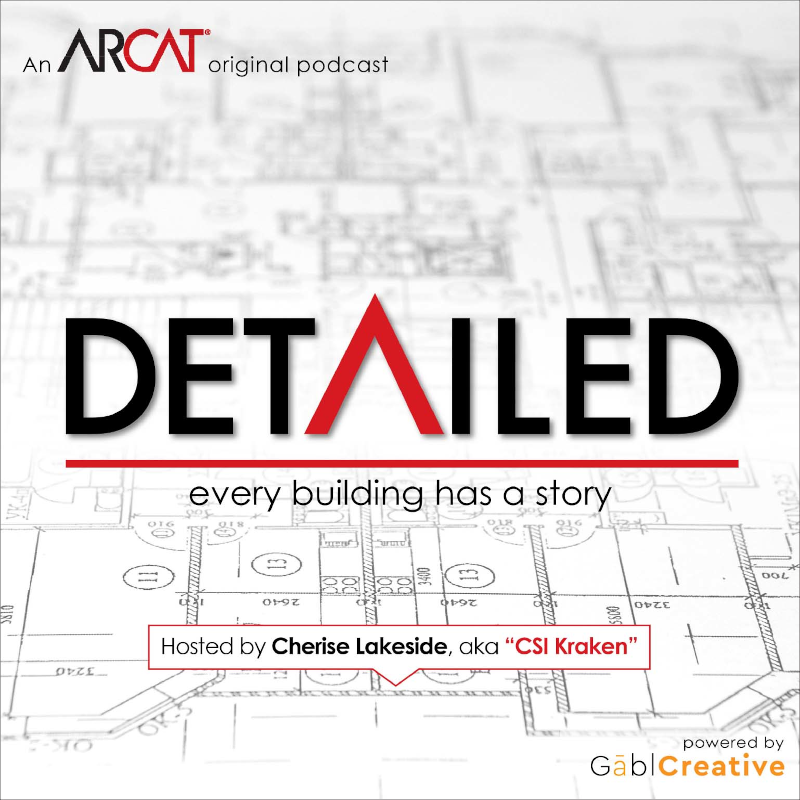|
Contributed by Cory Robbins I work for a multi-disciplined exterior envelope contractor. We have run into the same problem over and over for the past decade and are looking to address it sooner rather than later. We are talking about the huge gap/loophole that exists when installing a multi-layered dry-joint rainscreen system. Rainscreens are here to stay, and architects are designing buildings across the country to include them and show off some beautiful looking exterior facades that make everyone stop and stare when walking past. The issue that we have run into is quite simple, but tricky to fix. At the end of a project, if there happens to be a leak in the elevation including a rainscreen, the owner is in a heap of trouble. There is usually an Air & Vapor Barrier installer, and an Exterior Façade installer on the project and they both will complain and blame the other contractor for the leak. The worst part is they both have valid arguments. The AVB installer has an easy out in that “My work was watertight before the exterior façade installer drilled 50,000 holes through it, you can’t blame me!” The exterior façade installer says “My system is dry-seal, and is designed to let water through, how can you possibly blame me?” And so…… The Blame Game ensues! To make things worse, every AVB material warranty is void the moment it is pierced by any fastener. They specifically do not warrant workmanship and the best they will do is warrant their material failing. Manufacturers of AVB will replace the material (which costs next to nothing) and sometimes pay for the labor to remove their material, NOT INCLUDING the overburden/exterior façade. The owner of the building has two options at this point.
Both of these options are TERRIBLE! In both situations, the owner loses and the only winner is the lawyers who are making $400/hr. We have come up with a solution that can be incorporated into the specifications by the architect designing the project. The concept is simple, place the AVB installer/subcontractor underneath the exterior façade installer/subcontractor and make them one entity that provides a 10-year workmanship warranty for the wall system. This way, there is only one company to call when a leak is found in the elevation, the exterior façade installer. That subcontractor is in charge of the wall system, and they vouch for the AVB installer and their work. This does not mean one sole-source company, and it can be two separate companies, with one united goal, a leak-free rainscreen wall system. The precedent for this has already been set in curtainwall when the curtainwall installer includes the storefront and glazier and caulker under one umbrella. Or, when a roofer brings along their favorite plumber for the storm drains that need to be installed. The 10-year workmanship warranty language also forces a more detailed coordination effort by the two installers, simply because they know they will be coming back if there are any leaks after project completion. The warranty language covers the owner and the architect alike and forces coordination and detailed shop drawings through a contract signed between two companies, working together to create a rainscreen system that does not leak. The idea can be added as an “Add Alternate” to give each exterior façade installer the opportunity to put a price tag on the warranty, and then the owner can decide if it is worth the extra money for the high-quality it gives them. If they choose to exclude it, then at least the architect warned them against cutting corners on the rainscreen system. The architect can remind them that the water integrity of the exterior of the building should be the number one priority on any project. As we know, water/moisture is the number one enemy of ANY building.
Here is the warranty language as our lawyers have written it, and every architect has the ability to incorporate the language however they see fit. (usually in the Division 7 specification for the exterior façade)
13 Comments
Jori Smith
4/11/2017 06:53:51 pm
Yes!! This is the only reasonable solution I've ever heard for this problem.
Reply
4/12/2017 09:41:44 am
Jori,
Reply
Mike McBride
4/12/2017 12:34:47 am
It's refreshing to know that there is a multi-disciplined exterior envelope contractor out there. Do you have a case history which identifies the cost of this added protection and other details about the project? Thanks for your contribution to holistic thinking about the building envelope.
Reply
4/12/2017 09:46:22 am
Mike,
Reply
4/12/2017 02:18:43 pm
Mike,
Reply
4/12/2017 09:39:58 am
Howard,
Reply
12/4/2017 03:52:18 pm
Howard, did you ever end up using this specification language? I would love to follow up with you if you have the chance.
Reply
4/12/2017 05:17:19 pm
Solution is simple. We are a specialty cascade contractor and can frame your walls from the slab edge to the finish panel on the exterior of your building. This includes the exterior sheathing of the building, ABAA credentialed installers for your air barrier, and work with several leading manufacturer's that provide excellent warranties and support. Knowing the compatibility with air barriers, sealants, adhesives for insulation stick pins are critical.
Reply
Anne Whitacre
5/2/2017 05:00:13 pm
An exterior enclosure warranty has been standard practice in the firms I've worked with for a decade or so now. Originally, it was provided by the curtainwall fabricator/installer -- someone such as Benson or Permasteelisa. Now we are finding that owners often don't want to hire a "super" subcontractor, but still want the warranty protection. We start with a building enclosure specification in Division 08 that then "governs" multiple sections and warrants the work of all of them. We certainly get complaints, but the Owner is almost always on board with this method and likes the sole source of responsibility.
Reply
5/3/2017 01:11:11 pm
Anne, it sounds like our company needs to move to San Francisco! Wow, that is great news because everywhere I go, I am getting push-back from GC's and architects alike. I figured it was just a LONG way uphill.
Reply
Robin Snyder
6/1/2017 06:44:40 pm
I am considering adding this language into some current projects.
Reply
6/2/2017 09:51:35 am
Robin,
Reply
Leave a Reply. |
AboutLet's Fix Construction is an avenue to offer creative solutions, separate myths from facts and erase misconceptions about the architecture, engineering and construction (AEC) industry. Check out Cherise's latest podcast
Get blog post notifications hereArchives
March 2022
Categories
All
|



 RSS Feed
RSS Feed
